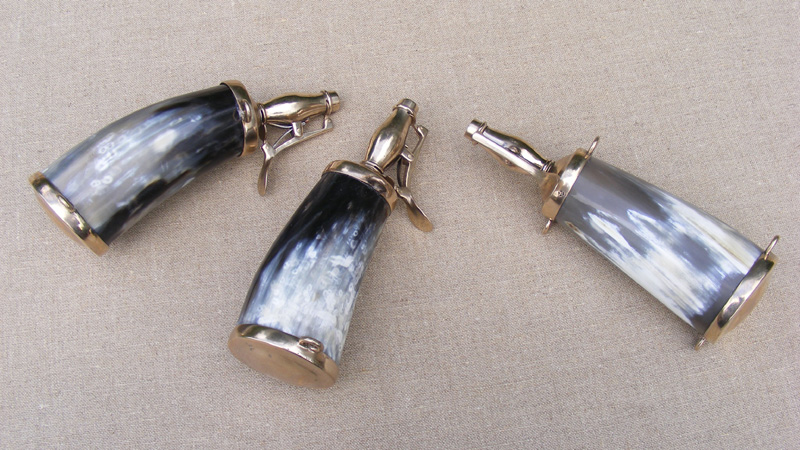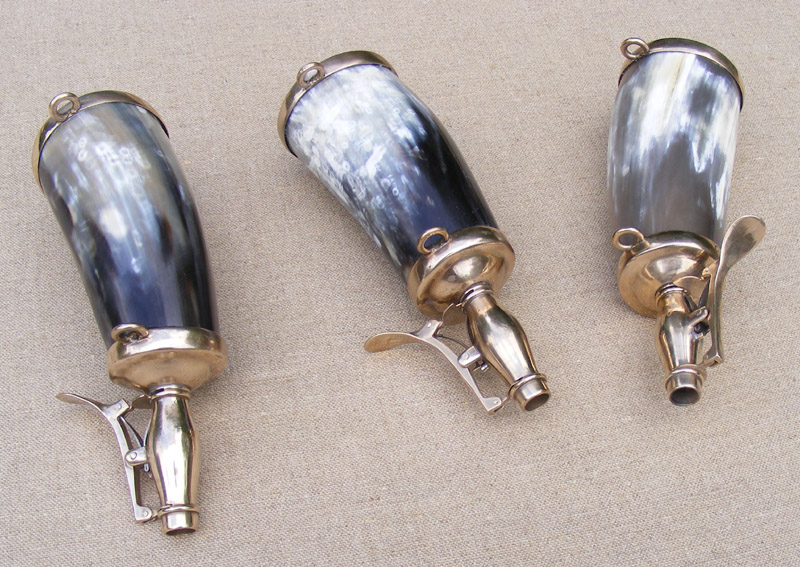Posts: 271 Location: United Kingdom
Sun 22 May, 2011 3:30 pm
Great work (as usual), Tod.
Lin, as you rightly point out, loading from a flask can be risky. We are expressly forbidden from loading from a flask on the range, and must use measured loads or paper cartridges. And Napoleonic/American Civil War reenactors also usually load from paper cartridges, but that is period correct. English Civil War reenactors tend to load from their wooden 'apostles' on a bandolier, but you do also get those who load from a flask although there is a 'standard' here in the UK for these - they have a passive sprung cut-off mechanism which separates the charge in the spout from the rest of the powder in the flask (not the same as the mechanism Tod has used, which is more historically correct). Flasks going off are thankfully extremely rare.
Edit: Found the flask I was looking for (see below - made by Plantagenet Reproductions). They have a sprung cut-off mechanism which isolates the body of the flask from the spout (you fill the spout with your finger over the end, then pour the charge in the spout down the barrel). It also has a blow-out plug on the underside. There are other variations on the principle, but you get the idea!
Julian
 Attachment: 49.23 KB
Attachment: 49.23 KB
[ Download ]

